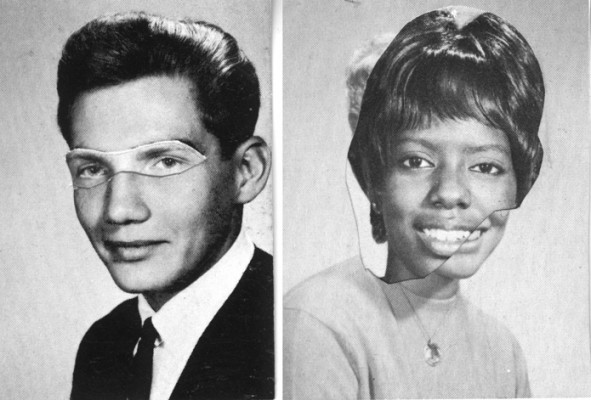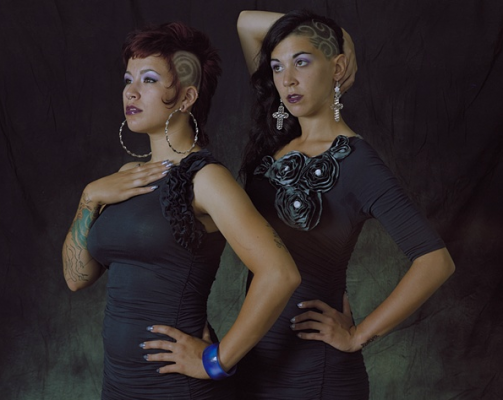Review: “Mixed Messages”

Chase Markovich, Couple, from the series Big Bang, 2010. Mixed media collage. Courtesy the artist and Antenna Gallery, New Orleans.
“Mixed Messages: Multiracial Identity Past and Present”
Antenna Gallery
3161 Burgundy Street
June 11–July 3, 2011
In a place like New Orleans, made culturally rich by racial diversity yet still so mired in segregative practices, “Mixed Messages” proves itself an important show not only for the local art scene but for the city at large. The group exhibition is presented in conjunction with Loving Day, a burgeoning network of global celebrations inspired by the events surrounding the 1958 marriage of Richard and Mildred Loving. When Richard Loving, a white man, married Mildred Jeter, a black woman, they were arrested and given the choice between jail sentences or banishment from their home state of Virginia, where interracial marriage was illegal. Choosing banishment, the couple relocated to Washington D.C., where they initiated proceedings that culminated in the 1967 Supreme Court case Loving v. Virginia. The court ruled unanimously in their favor, determining that state laws banning interracial marriage were unconstitutional.
In addition, “Mixed Messages” is spurred by a case much closer to home. In 2009, Judge Keith Bardwell of Tangipahoa Parish denied a marriage license to Louisiana couple Beth Humphrey and Terence McKay, citing as his reasons the future hardship for their children and his belief that interracial marriages simply don’t last. In spite of the gravitas of those two events, “Mixed Messages” as a whole is neither dogmatic nor didactic in its approach to the subject of racial identity. Rather it gives a varied set of artists a platform from which to speak about the meaning of identifying as “other.”
Artist Jerald White uses novelty playing card decks displaying racial signifiers to construct his house of cards sculptures. In Kente House, 2011, the cards bear images of influential African-American figures such as Harriet Tubman, Jackie Robinson, and Colin Powell on the faces, with a Kente cloth print on the reverse. Authentic Kente cloth from Ghana is woven in such a way that it cannot be ripped apart. White, who also curated the show and identifies as African American, says his piece addresses the growing fear that black culture will become less important—with diminished political and economic leverage—as mixed-race individuals who had previously identified as black begin to self-identify differently. He represents these concerns by simultaneously likening the strength of the black cultural “fabric” to something as strong as the unyielding Kente cloth and as fragile as a house of cards. In conversation, White asserted that in reality “we’re not losing anything and should embrace the definitions as they are changing.”
With a healthy dose of whimsy, Chase Montague Markovich applies a more literal stance to the unpacking of identity and the blurring of racial (and gender) lines in his Big Bang series. The 23-year-old artist collages faces extracted from vintage yearbook photos to create Frankenstein-like couples, framed and hung together like a proud display of family portraits. In the cut-and-paste layering of disparate features, the artist creates strangely compatible hybrids that suggest the possibilities of simply considering people as individuals rather than as a collection of their composite parts. The use of black-and-white yearbook photos invites that pang of nostalgia that reminds us of the time when nascent idealism and young love mean anything could happen.
According to the 2010 United States census, approximately nine million Americans identify as multiracial. Data recently analyzed by Pew Research Center revealed one in seven new marriages is between spouses of different races or ethnicities, signaling traditional and definitive notions of race may be steadily becoming obsolete. As artists have so often been the forerunners prophetically identifying societal patterns, “Mixed Messages” calls us to attend this cultural and demographic shift, dismantling steadfast categories as more and more folks choose to color outside the lines.

Helen Maurene Cooper, Untitled, from the series Hoodwink, 2010. Archival pigment print. Courtesy the artist and Antenna Gallery, New Orleans.



